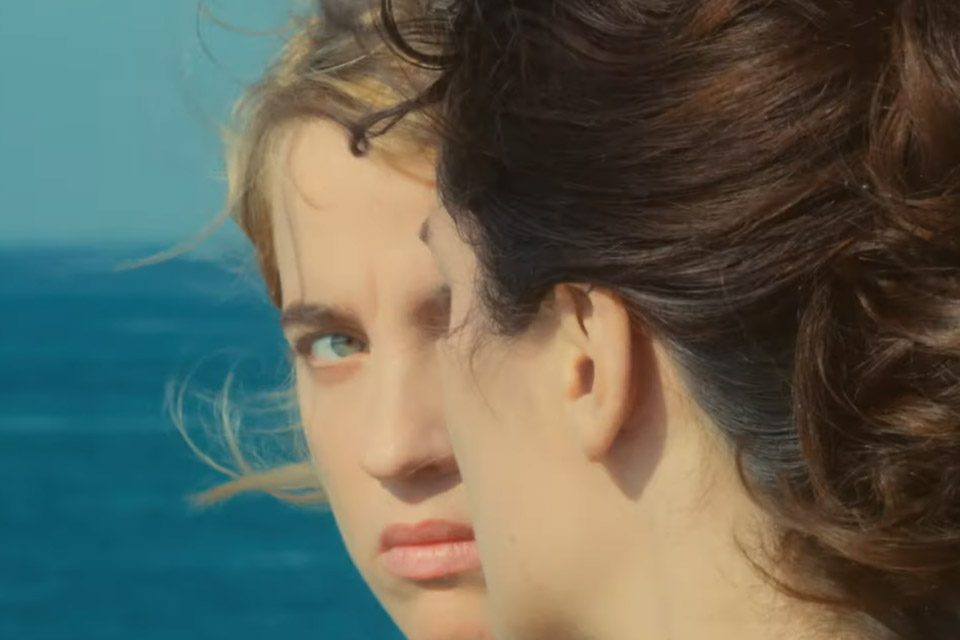Portrait of a Lady on Fire (Céline Sciamma, 2019): France
Reviewed by Mark Wang. Viewed at the AFI Fest 2019.

My heart was on fire while watching Portrait of A Lady on Fire. This film captures the concept of the female gaze succinctly with its cinematography and period drama storyline.
Marianne (played by Noémie Merlant) is a young female painter who arrives at an island to help paint a portrait of the young woman Héloïse (played by Adèle Haenel). This task must be done before Héloïse is to marry off to a Venice man. The backstory is that Héloïse has rejected the previous painter who tried to paint her portrait and that her sister threw herself off the cliff before Marianne has arrived. Thus her mother tasked Marianne to accompany Héloïse and paint her secretly by memorizing her features.
Céline Sciamma masterfully portrays drama between the two characters. Héloïse soon grew affections for Marianne while Marianne secretly completes the portrait painting, which in remains stale. The conflict for Marianne is working with the contrasting relationship between her with the subject, Héloïse, and the person who also is a companion to Héloïse. Halfway through the movie, however, Marianne reveals to Héloïse her mission on the island, hoping that her openness would aid her portrait. This brings them to a new level of understanding and further Marianne’s ability to capture the personality of the subject. There were several intimate moments between two characters touching and locking eyes. However, this film is never too sexual like other French films.
Cinematography is both function and form mastered. Cinematographer Claire Mathon understands the underlining feminist message of the film and thus translates this vision into the type of shots she uses. When the characters are outside, wide shots of scenery capture the openness of the space, communicating a sense of freedom from the constraints of the conservative French Society. The emotional, perhaps the capstone, scene of the fire pit with Héloïse behind it evokes a powerful remainder what art can be. On the other hand, the shots in the interior convey a quieter mood. It seems that often the characters are more static (literally when posing) and yet close-ups of their faces communicate the inner lives of the characters. The cinematography is further aided by subtle editing which perfectly elicits reactions of characters.
Overall, Portrait of a Lady on Fire is a tour de force of a masterpiece by director Céline Sciamma who understands film as a powerful emotional medium. Do not miss this film.
About this entry
You’re currently reading “Portrait of a Lady on Fire (Céline Sciamma, 2019): France,” an entry on Student Film Reviews
- Published:
- 11.25.19 / 3pm
- Category:
- AFI Filmfest 2019, Films
15 Comments
Jump to comment form | comments rss [?]